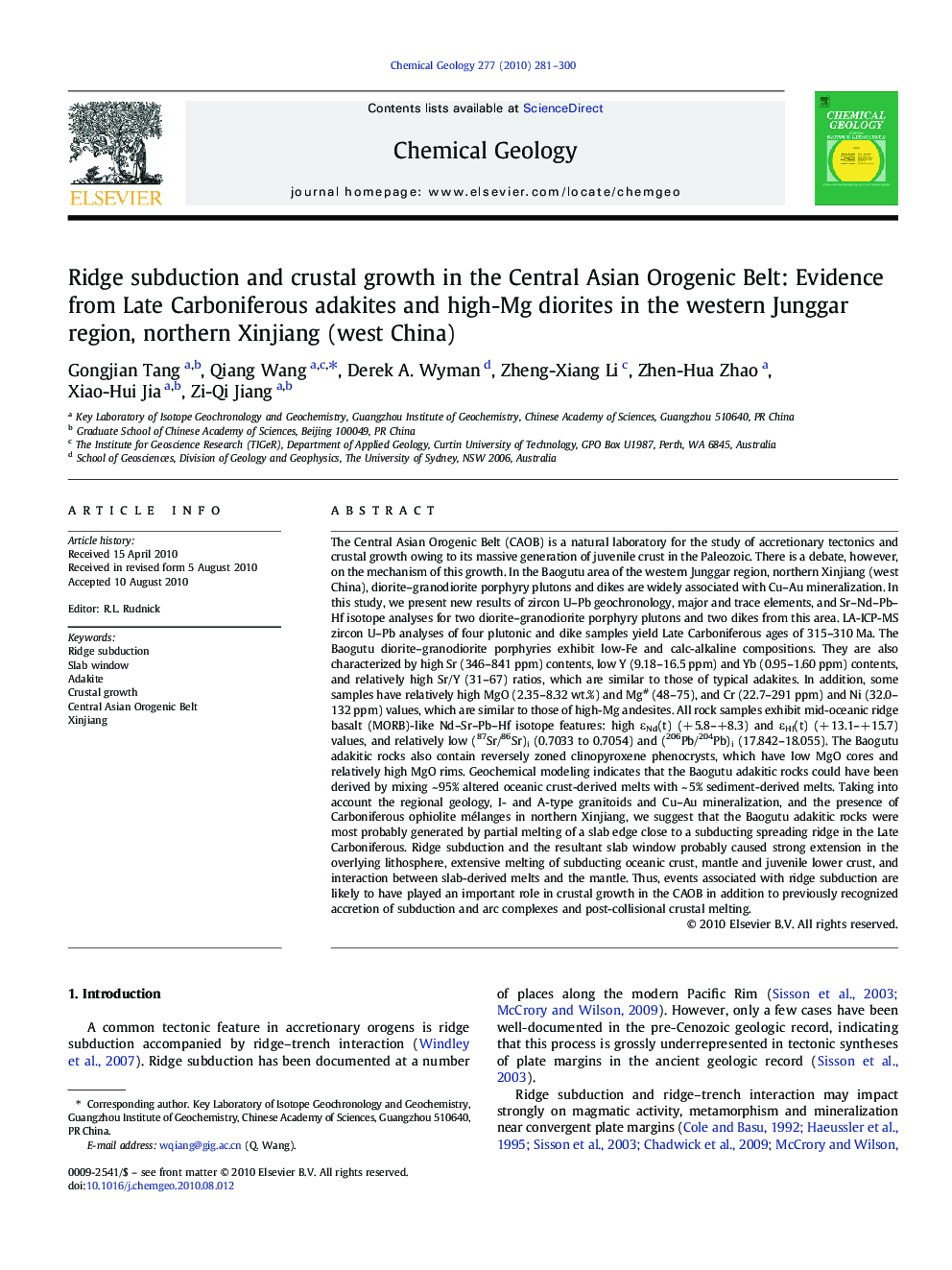| Article ID | Journal | Published Year | Pages | File Type |
|---|---|---|---|---|
| 4699909 | Chemical Geology | 2010 | 20 Pages |
The Central Asian Orogenic Belt (CAOB) is a natural laboratory for the study of accretionary tectonics and crustal growth owing to its massive generation of juvenile crust in the Paleozoic. There is a debate, however, on the mechanism of this growth. In the Baogutu area of the western Junggar region, northern Xinjiang (west China), diorite–granodiorite porphyry plutons and dikes are widely associated with Cu–Au mineralization. In this study, we present new results of zircon U–Pb geochronology, major and trace elements, and Sr–Nd–Pb–Hf isotope analyses for two diorite–granodiorite porphyry plutons and two dikes from this area. LA-ICP-MS zircon U–Pb analyses of four plutonic and dike samples yield Late Carboniferous ages of 315–310 Ma. The Baogutu diorite–granodiorite porphyries exhibit low-Fe and calc-alkaline compositions. They are also characterized by high Sr (346–841 ppm) contents, low Y (9.18–16.5 ppm) and Yb (0.95–1.60 ppm) contents, and relatively high Sr/Y (31–67) ratios, which are similar to those of typical adakites. In addition, some samples have relatively high MgO (2.35–8.32 wt.%) and Mg# (48–75), and Cr (22.7–291 ppm) and Ni (32.0–132 ppm) values, which are similar to those of high-Mg andesites. All rock samples exhibit mid-oceanic ridge basalt (MORB)-like Nd–Sr–Pb–Hf isotope features: high εNd(t) (+ 5.8–+8.3) and εHf(t) (+ 13.1–+15.7) values, and relatively low (87Sr/86Sr)i (0.7033 to 0.7054) and (206Pb/204Pb)i (17.842–18.055). The Baogutu adakitic rocks also contain reversely zoned clinopyroxene phenocrysts, which have low MgO cores and relatively high MgO rims. Geochemical modeling indicates that the Baogutu adakitic rocks could have been derived by mixing ~ 95% altered oceanic crust-derived melts with ~ 5% sediment-derived melts. Taking into account the regional geology, I- and A-type granitoids and Cu–Au mineralization, and the presence of Carboniferous ophiolite mélanges in northern Xinjiang, we suggest that the Baogutu adakitic rocks were most probably generated by partial melting of a slab edge close to a subducting spreading ridge in the Late Carboniferous. Ridge subduction and the resultant slab window probably caused strong extension in the overlying lithosphere, extensive melting of subducting oceanic crust, mantle and juvenile lower crust, and interaction between slab-derived melts and the mantle. Thus, events associated with ridge subduction are likely to have played an important role in crustal growth in the CAOB in addition to previously recognized accretion of subduction and arc complexes and post-collisional crustal melting.
Research Highlights►New constraints on ridge subduction in the Central Asian Orogenic Belt (CAOB). ►315-310 Ma adakites and high-Mg diorites occur in the western Junggar region, CAOB. ►Major and trace element, and Sr-Nd-Pb-Hf isotope data indicate slab melting. ►Ridge subduction and the resultant slab window probably caused extensive melting. ►Ridge subduction played an important role in crustal growth in the CAOB.
